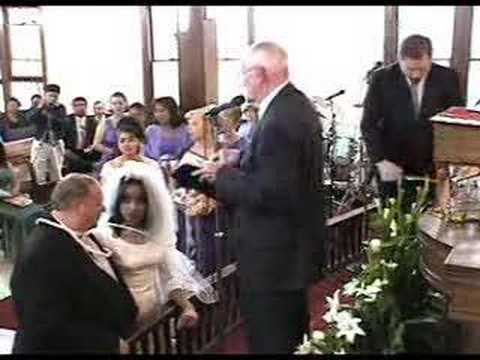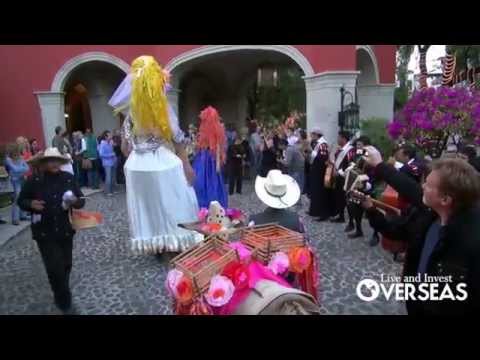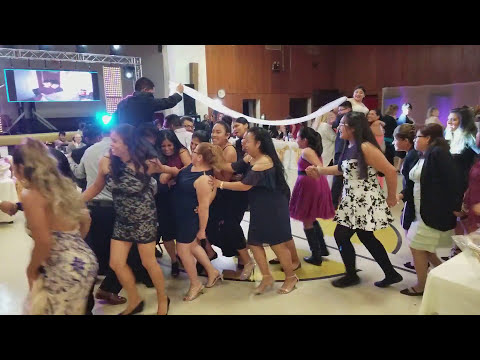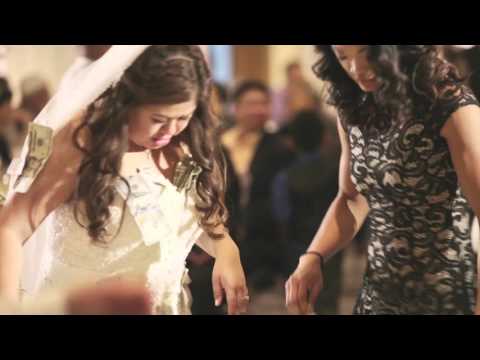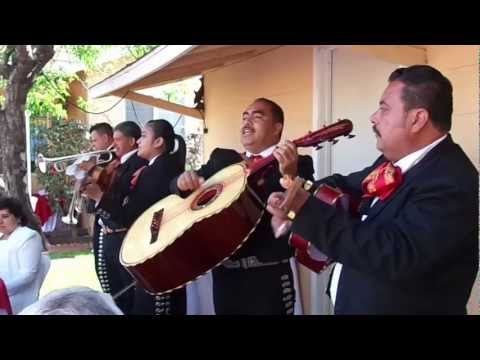Marriage is one of the few institutions that are present in every corner of the world. It is a way of strengthening social relationships, forming new bonds, and enriching cultures. However, each country has its unique customs and traditions associated with marriage.
Mexico is a predominantly Catholic country, and most Mexican weddings take place in a church. Thus, Mexican wedding traditions often have religious roots or are observed within Mass. They also illustrate the family-oriented nature of Mexican society.
Listed below are 22 memorable Mexican wedding traditions, along with a brief explanation of their significance and meaning.
Marvelous Mexican Wedding Traditions
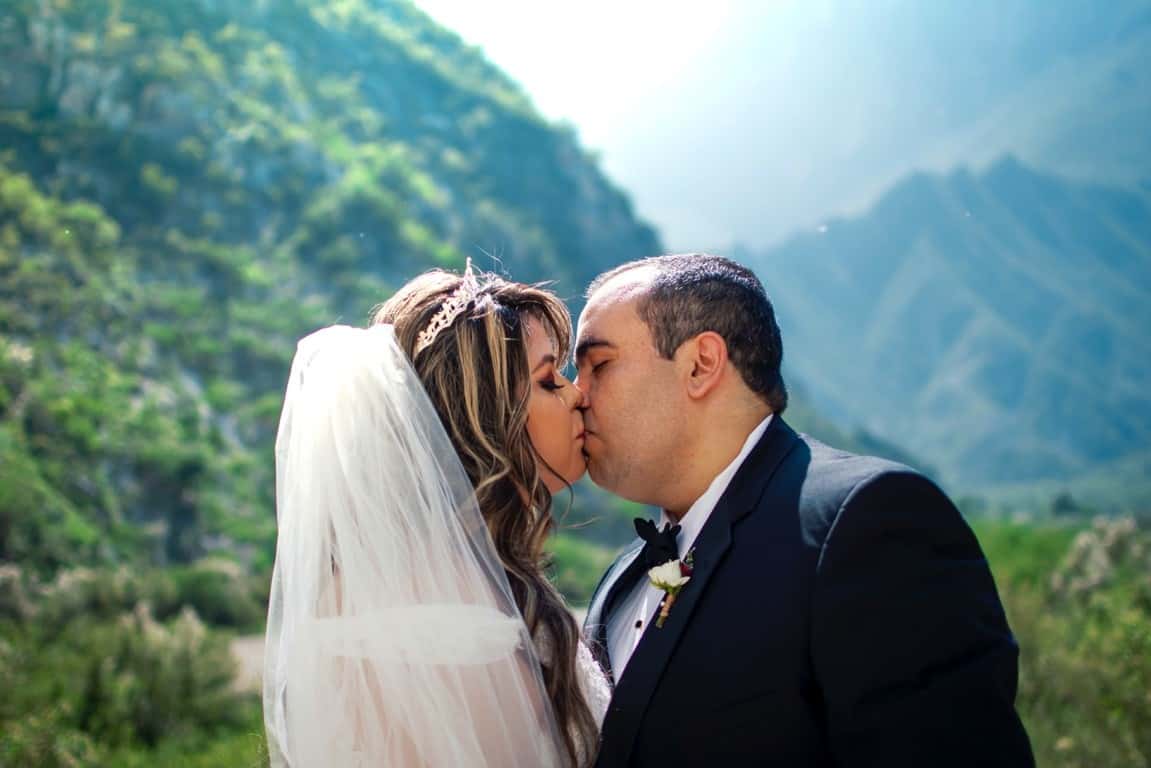
1. Bride’s Wedding Dress
Traditionally, a Mexican bride’s wedding dress is sewn by the bride herself or her family, with the groom’s family shouldering the expenses. They integrate symbols of fortune, fertility, and happiness into the dress.
However, in more recent years, brides get their wedding dresses altered to fit their preferences. A wide variety of distinct local designs can be seen throughout Mexico, so the bride is assured of the result’s high quality. Furthermore, it is common to see a Mexican bride cover her shoulders with a bridal shawl or bolero jacket.
2. El Lazos (The Lasso)
Padrinos are in charge of putting the lazos on the bride and groom. They do this by placing it over their heads like a necklace. This ritual takes place while a special wedding prayer is uttered, which is generally before or after exchanging vows.
Recently, lazos have also taken the form of:
- Two flower leis with a bow in the middle tying them together. The fresh flowers are an homage to the original tradition of having flower necklaces and a shawl.
- A double rosary with one terminal. The complexity and craftsmanship of the rosary depend on the preference of the couple, though crystal and silver rosaries are the most popular ones.
- A silk cord with flowers and other ornaments. Again, the intricacy of the design varies widely and is contingent on the couple’s preferences. The flowers are usually made from fabric, beads, and bread paste to ensure that the “flowers” will last a long time. The resulting lazos can then be kept as non-religious but lifelong keepsakes.
3. Grooms Wear a Guayabera (Men’s Summer Shirt)
A groom’s attire is typically composed of a guayabera and black pants. However, a groom can also choose to wear a traditional suit if that is where here is more comfortable. Do keep in mind that the weather in Mexico can get quite hot and humid, making a guayabera both a fashionable and practical piece of clothing.
4. Kneeling Pillows
Because Mexican weddings are traditionally held within Mass, there are various points wherein everyone in attendance must kneel to pray. Sponsors will give kneeling pillows to the couple to make them more comfortable on their special day and then treasure them as a keepsake. These pillows are usually white and have lace embroidery.
5. Las Arras Matrimoniales (Gold Coins)
These coins represent Jesus and His 12 apostles and also signify the groom’s promise to provide for his wife. Concurrently, this exchange is also symbolic of the bride’s promise to care for her husband.
6. La Callejoneada (The Wedding Parade)
7. La Pedida (The Father’s Approval)
In many societies, fathers are seen as the head of the household. Within a Mexican family, the father usually has the final say when making important decisions. This authority is illustrated in the Mexican wedding tradition called “La Pedida,” wherein the groom’s family visits the bride’s home. During this courtesy visit, the groom formally asks for the woman’s hand in marriage.
Making the Pedir, or the request, is a sign of respect not only for the woman but also for her family as a whole. If the father gives his permission, then the visit also doubles as a way for the two families to socialize. They will also begin figuring out the logistics of the ceremony, such as what the best date to hold it would be.
8. La Tornaboda (The After Party)
Wedding receptions are huge events that consist of relatively large numbers of people. It is a Mexican wedding tradition to hold a smaller reception, called la tornaboda, wherein only close friends and family members are invited. This allows the newlyweds to have a more personal celebration; they may also opt to open the gifts they received during this get-together.
9. La Vibora de La Mar (The Sea Snake Dance)
10. Los Padrinos y Madrinas
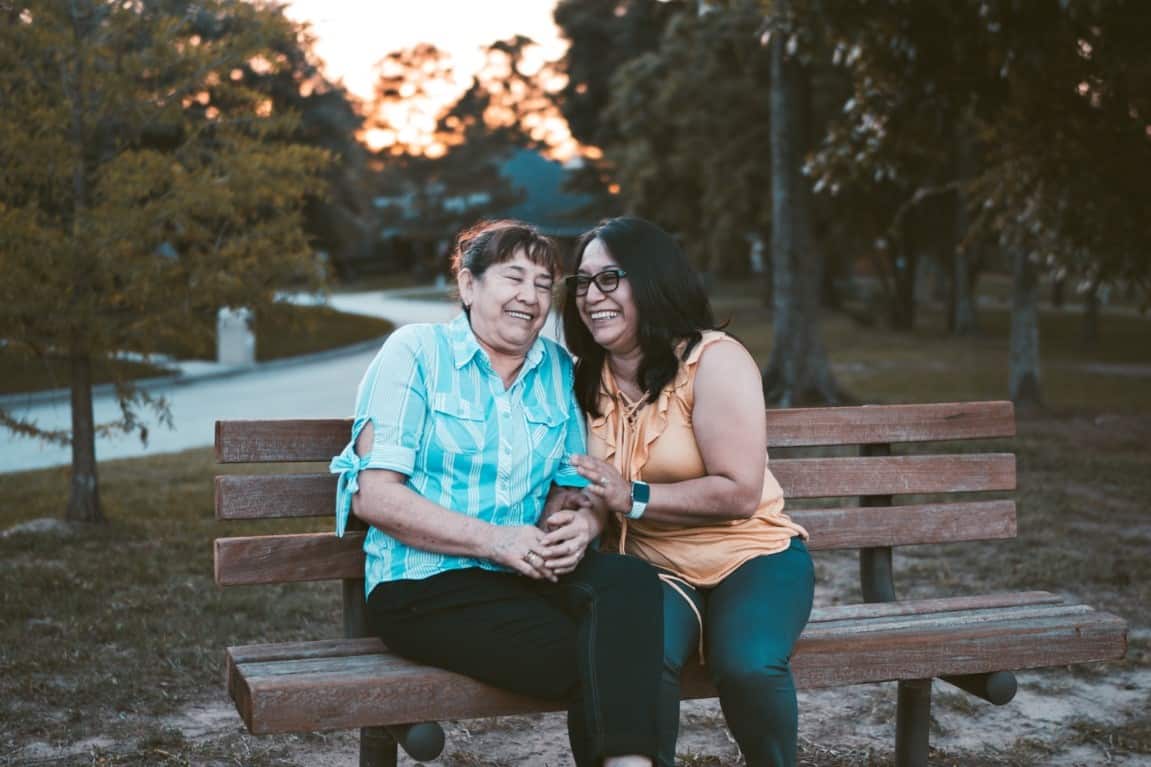
The padrinos are anyone who the Mexican couple selects to be their mentors and sponsors throughout their engagement and ceremony. Getting picked to be a padrino and madrina is an honor, as it indicates that they are seen as commendable role models. Couples can choose to have as many or as few padrinos and madrinas as they see fit.
As stated above, there are two types of padrinos and madrinas: mentors, who are chosen by the couple; and sponsors, who volunteer to provide something for the ceremony. Similar to the Dominican and Colombian wedding tradition of having a pair of godparents, mentors are responsible for guiding the couple as they navigate the new chapter of their lives. Sponsors provide items that are needed for rituals, such as flowers, coins, and so on. Likewise, they may also cover a portion of the wedding budget.
Moreover, the couple may also delegate certain duties to their padrinos and madrinas. For example, a padrino or madrina may be in charge of wrapping the lasso (“padrinos de los lazos”) or holding the gold coins (“padrinos de arras”). Padrinos de honor are mentors who follow the couple’s parents as they walk down the aisle. Los primeros madrina host pre-wedding events, such as the bridal shower.
11. Mantilla (Bridal Veil)
Another wedding tradition Mexico shares with other Hispanic and Latin American cultures is the mantilla or bridal veil. It is a lace or silk scarf worn over the head, effectively covering the bride’s hair and shoulders. Brides are required to wear a mantilla if they are getting married in a church.
12. Matching Colors for the Bridal Party
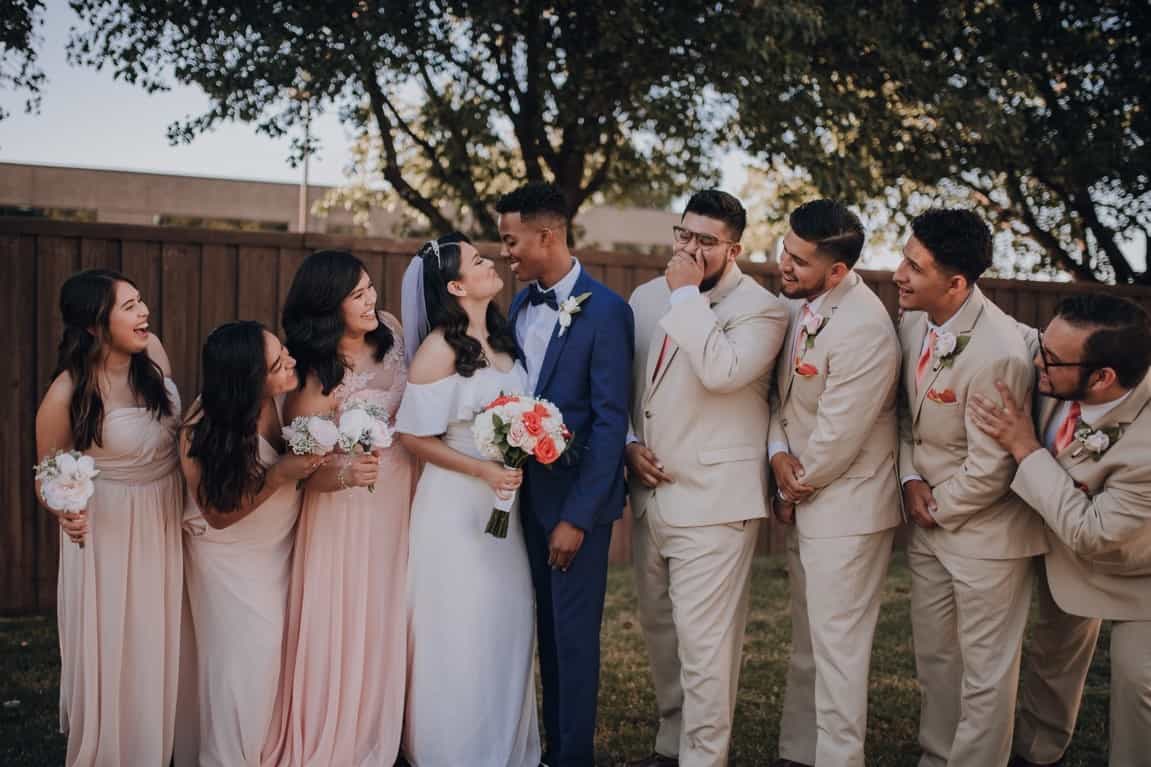
In Mexican wedding tradition, the bridal party, which consists of the bridesmaids, groomsmen, ring bearers, and flower girls, wears matching colors to the ceremony. The bridesmaids’ dresses are coordinated to match the color of the groomsmen’s ties or cummerbunds. The ring bearers and flower girls have the option to match the bride and groom or the bridesmaids and groomsmen. This makes for an aesthetically pleasing sight when they walk down the aisle.
13. Mock Rings for the Ring Bearers
As mentioned above, Mexican bridal parties typically have ring bearers; however, most of the time, they only carry fake or mock rings. The honor and responsibility of carrying the real rings are placed on the padrinos de anillos, which roughly translates to “sponsor of the rings.” In some cases, the padrinos de anillos do sponsor the rings, but this is not always true.
14. Money Dance
15. Ofrenda (Offering)
Once the Catholic wedding ceremony is finished, the bride kneels, says a prayer, and offers a bouquet to the altar of the Virgin of Guadalupe. This offering is made as a request for Her blessing, guidance, and counsel. This Mexican wedding tradition is performed before the recessional, and a second bouquet is given to the bride for her to use later at the reception.
16. Prayer for the Bride
Before they depart for the wedding venue, the mother of the bride prays for guidance and protection as her daughter enters a new chapter of her life. The processional begins with the bride’s and groom’s families walking from their homes to the location. This walk is the families’ way of showing solidarity and pride in their children’s marriage.
17. Processional
Commonly, only the bride walks down the aisle with her parents. However, in Mexican wedding traditions, the groom’s parents are also encouraged to walk down the aisle with their son. Not only is this a source of comfort for both the parents and their child, but this is also a show of acceptance and support toward the union to be solemnized. It is also illustrative of how much importance Mexican culture places on filial piety; walking with parents down the aisle is an act of honoring them.
18. Serenade from the Mariachi
Mariachis have an impressive repertoire of songs they can perform. Much like you would a wedding DJ, it is best to provide them with a list of must-plays and must-not-plays to avoid awkwardness. Here are some recommendations of the most popular songs sung by mariachis:
- El Milagro de Tus Ojos (The Miracle that Is Your Eyes)
- Mi Reina y Mi Tesoro (My Queen and My Treasure)
- Contigo Aprendí (With You I Have Learned)
19. The First Dance
Mexican wedding receptions are elaborate and energetic events that can go on for two days. Receptions heavily feature upbeat music, to which the guests will dance the night away. One of the most significant moments in a wedding reception is the newlyweds’ first dance. Once they are done, they then dance with their parents and their padrinos and madrinas.
20. Tossing Items During the Recessional
As the couple leaves the venue of the ceremony, the guests toss rice, bird seeds, or white confetti toward them. These items are well-wishes for the couple, signifying success, fertility, and fortune.
21. Wedding Favors
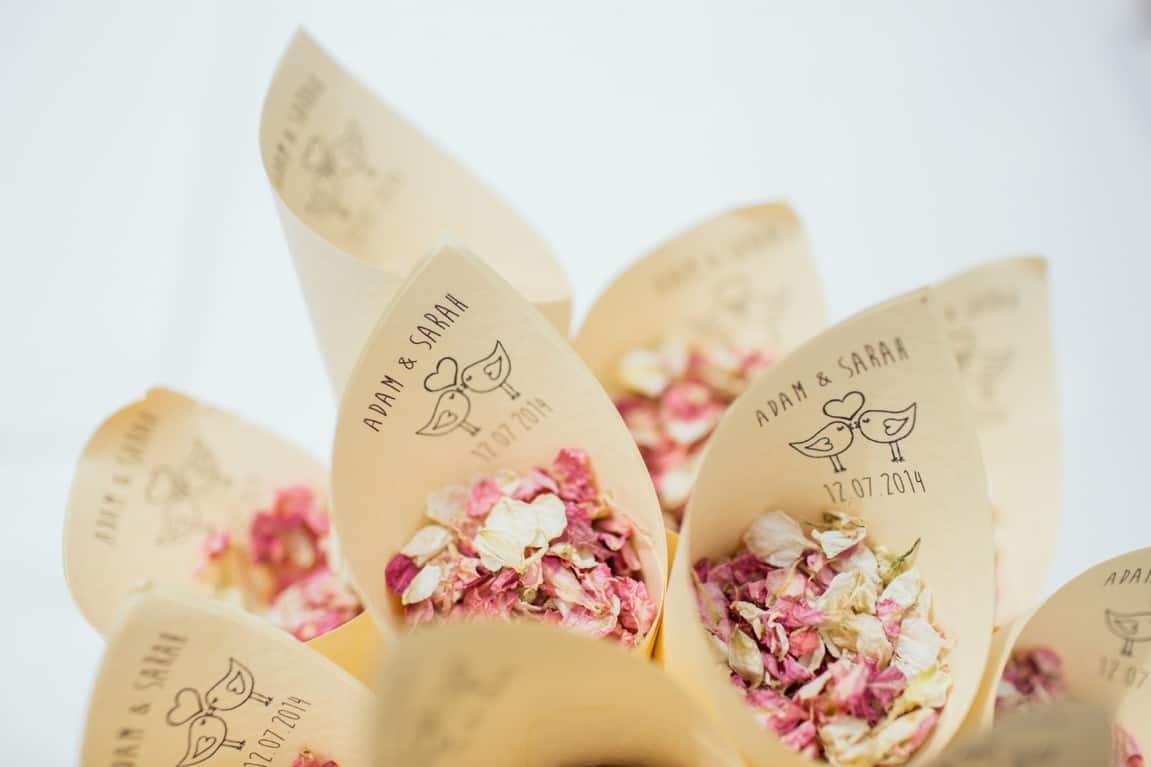
In Mexican wedding traditions, wedding favors given to guests hold significant importance. Customarily, these favors are handled by the bride alongside her family; some people opt to order them from a local store. Regardless, the wedding favor has to fit into the overall theme design, and color scheme of the wedding. Frequently, guests receive one favor at the ceremony and another at the reception. Here are some examples of traditional Mexican wedding favors:
- Before the ceremony concludes, a small heap of rice wrapped in tulle is given to the guests. The names of the bride and groom, along with the date of the ceremony, are written on a paper or fabric ribbon. More decorations are then added. This wedding favor serves two purposes: one, to thank the guests for coming; and two, to give them something to throw for the tossing tradition mentioned above.
- Wedding favors given at the reception are typically mementos and keepsakes for decoration. Sometimes, they are handcrafted by the bride herself, giving them more sentimental value. These favors usually indicate the couple’s names and the date of the wedding to serve as a reminder of the wedding. Common reception wedding favors include succulents, hand fans, ribbons, coasters, and local art.
Mexican couples can also offer bolos, which are bags of popular treats and sweets that are popular within children’s parties. These edible wedding favors are practical, in that they do not require as much preparation, and are nostalgic, in that bolos invoke memories from one’s youth.
22. Wedding Reception Food
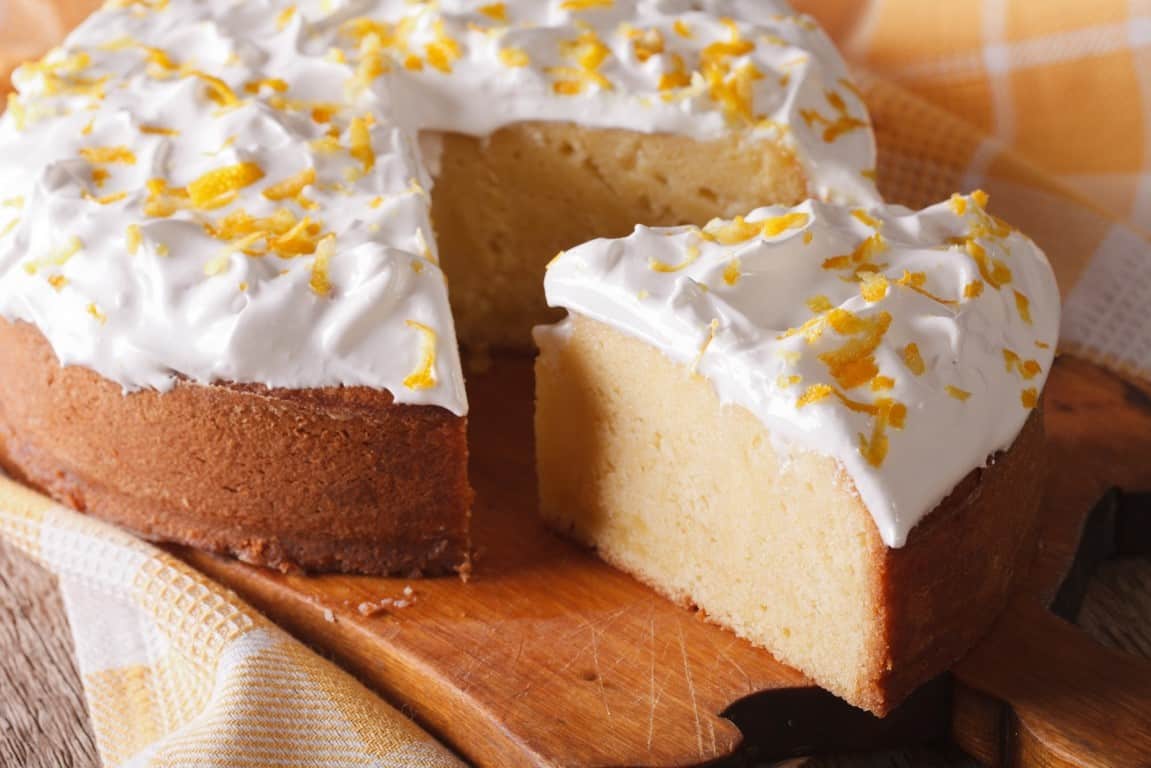
Mexican cuisine is world-renowned, influencing many other cultures and countries. During a Mexican wedding reception, families typically go all out to celebrate the union of the newlyweds. It is common practice to slaughter a pig or goat for the occasion, preparing scrumptious dishes such as tortillas, tamales, tacos, and enchiladas to go with it. Iconic Mexican sauces, made with a wide variety of chilis, spices, and nuts, are also served.
There is also an abundance of beverages during a Mexican wedding reception. Buckets of beer, barrels of non-alcoholic flavored water, tequila, and margaritas are present, as well as traditional Latin and Mexican drinks like agua frescas. You are also likely to see an open bar serving a wide variety of drinks
The desserts provided also have variety; cookies, candies, and cake are available for any guest. Traditionally, Mexican weddings featured a tres leches cake, meaning “three (kinds of) milk,” getting its name from the use of whole milk, evaporated milk, and sweetened condensed milk. The result is a heavenly piece of cake that dissolves in your mouth as you chew. Wedding cookies, made with butter, pecans, and confectioner’s sugar, taste just as delicious. Guests are free to take wedding desserts home.
Final Thoughts
Mexican wedding traditions beautifully intertwine history, religion, and culture, creating a rich tapestry of customs passed through generations. As with many cultural practices, while some traditions remain steadfast, others evolve to reflect the dynamic nature of society and changing personal preferences.
For couples looking to weave these traditions into their ceremonies, it’s a nod to the enduring power of love and the rich heritage of Mexico. For guests, it’s an opportunity to immerse oneself in deep-rooted customs and celebrate the universality of love, family, and unity.
